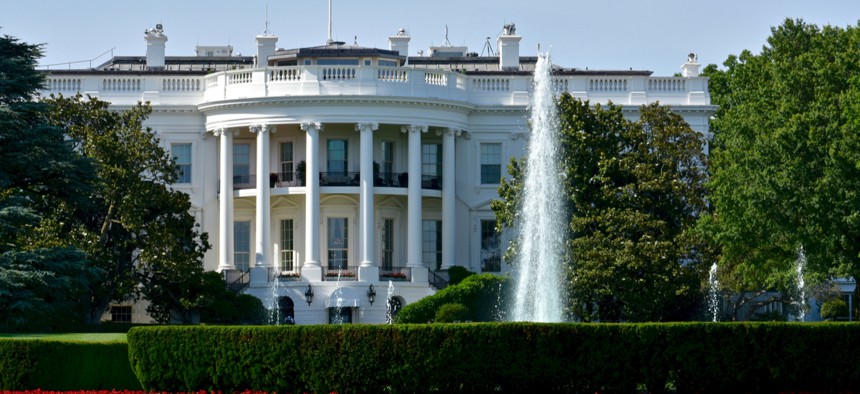Federal CIO Sheds Light on What Agencies Are Learning in COVID-19 Response

Jeramey Lende/Shutterstock
U.S. tech chief Suzette Kent detailed how COVID-19 response efforts offer agencies a new vantage point into their past operations.
COVID-19 and the quick shift to remote work opened federal officials’ eyes to areas for improvement in their pre-pandemic practices and escalated insiders’ acceptance of fresh modes and technologies, according to Federal Chief Information Officer Suzette Kent.
“Overall, it's been exciting,” Kent said during a Dcode virtual session last week with the accelerator’s Chief Executive Officer Meagan Metzger. “Many individuals who I would say might have resisted some of the technology tools, not only have accepted them now—now, because of the duration, they're comfortable with them.”
Kent said amid the pandemic, her team and their partners across the federal information technology landscape are primarily focusing on mission continuity and response. Within the realm of response, the CIO said her role is to “coordinate and enable,” meaning whether through guidance, forums or beyond, she and her team must act swiftly “to move information, to convene and to get action.”
“I call myself and my team—we are the enablers of the federal IT community,” Kent said.
Usually, that enabling entails tactical work, like developing new policies, but she noted that “in this situation” it also involves efforts to accelerate data-sharing and install new contracts to get that community resources and tools they need most, while also helping to keep the wheels running in the massive new, nationwide teleworking environment. To her, it’s been inspiring to see agencies “respond aggressively” and now two months in, effectively sustain their operational posture.
“We're continuing forward—and that gives us some proof points for what the future looks like,” Kent said.
Scalable, cloud-based and easily configurable commercial solutions helped federal agencies and officials move quickly in their initial response efforts when the outbreak hit, as did scaling or shifting services that already existed within agencies. And some of the “proof points” that have emerged in the efforts were spawned by necessity. For instance, some agencies transitioned about 95% of their workforce to remote work due to stay-at-home orders, and in that light, she noted that individuals who might have previously held out against trying new things couldn’t refuse new collaboration tools. Officials are also becoming increasingly comfortable with digital signatures and newly-introduced ways to share information online.
“It's absolutely thrilling when I’ve heard some, again, folks who you might have had to force them to adopt before, or they didn't even take their own their equipment home, talking about, ‘oh, did you see this new feature?’” Kent said. “And that gives us an opportunity—again, use as a proof point—it's not the ‘what if’ it's ‘when I did it, when that happened, that let me think differently about the paradigm.’”
The new working reality is also inspiring government officials to rethink their purchasing activities and the flexibilities of distributed workforces, Kent said. Some agencies have teams that endure 24-hour work cycles because they have to, but the current conditions motivated them to make new considerations around shifts and schedules. Further, COVID-19’s disruptions have also exposed specific fragilities in the nation’s supply chains, which the CIO called “another proof point” to be examined.
“Do we understand the critical linkages to certain things and do we have clarity around the things that are most critical to missions of agencies in our citizen service delivery?” Kent noted. “This unusual situation, it's exposed things that we're going to consider.”
And as many agencies are forced to examine their continuity-of-operation plans, Kent added that insiders are realizing that “many of those didn't have kind of like the special drill-down for pandemics, or if they did, we are learning things that will help make those assumptions and actions, you know, much more clear and inform them better.”
“We've captured a lot of those,” she explained. “So, I think a lot of those are going to help us as we move forward.”
Robust data is driving new outcomes across many areas including medicine, commerce, and state and local efforts during the pandemic, and Kent said the needs and efforts are accelerating requirements already put in place by the administration to establish proper infrastructures to help the government become fully “data-driven.” She noted that almost all agencies now have COVID-19 information links internally for staff or externally on their websites with citizen-serving functions, much of which incorporates shared data. Agencies on the frontlines are recognizing not only how important sharing data and common data models are, but also the crucial need for the consistency of the information, she said.
Still, the Foundations for Evidence-Based Policymaking Act mandated federal agencies to establish the role of chief data officers within their workforce, yet presently, not all agencies have one in place—including a top health agency, during the pandemic.
“I don't know that it changed anyone's understanding of the role and the importance,” Kent said. “It might have certainly changed the urgency.”
RELATED PODCAST
NEXT STORY: COVID-19 shifts network priorities






